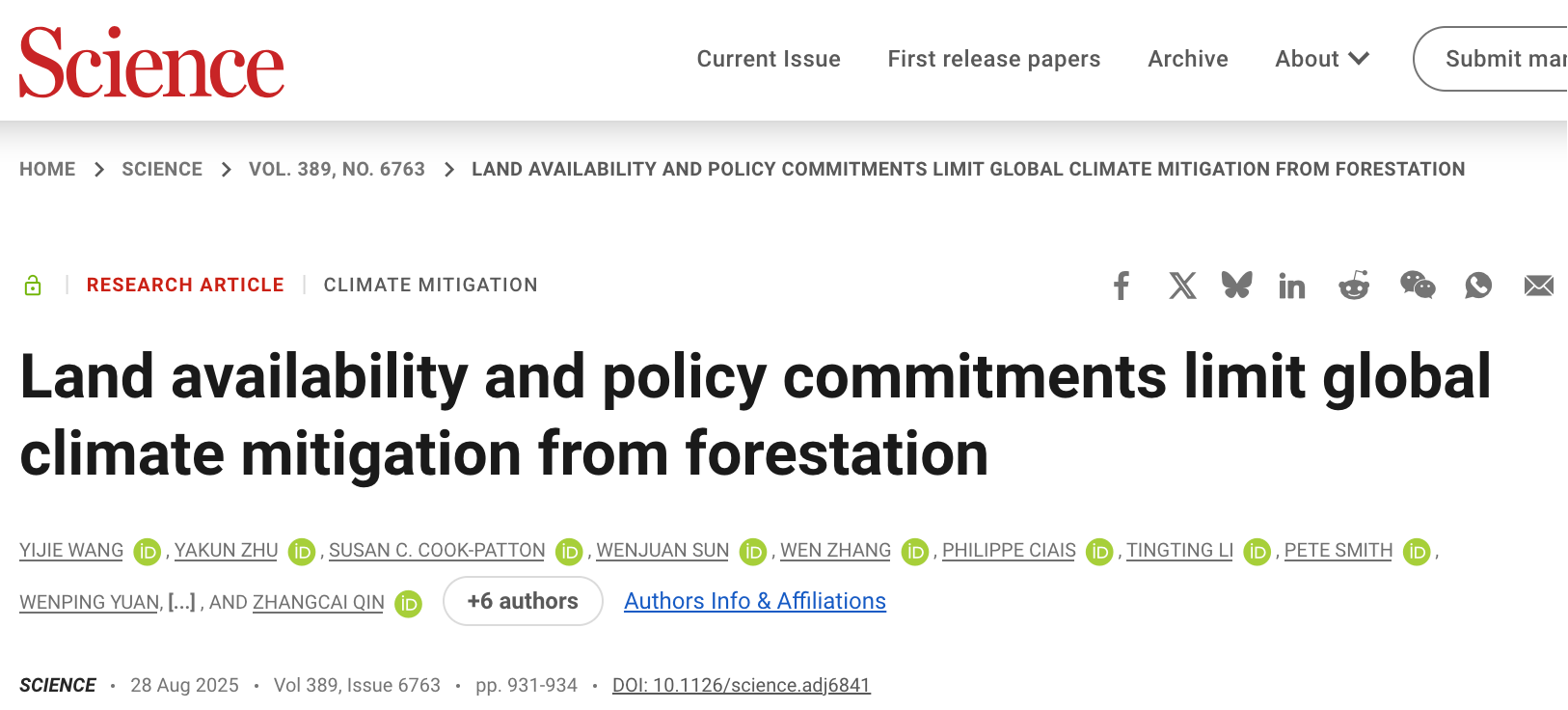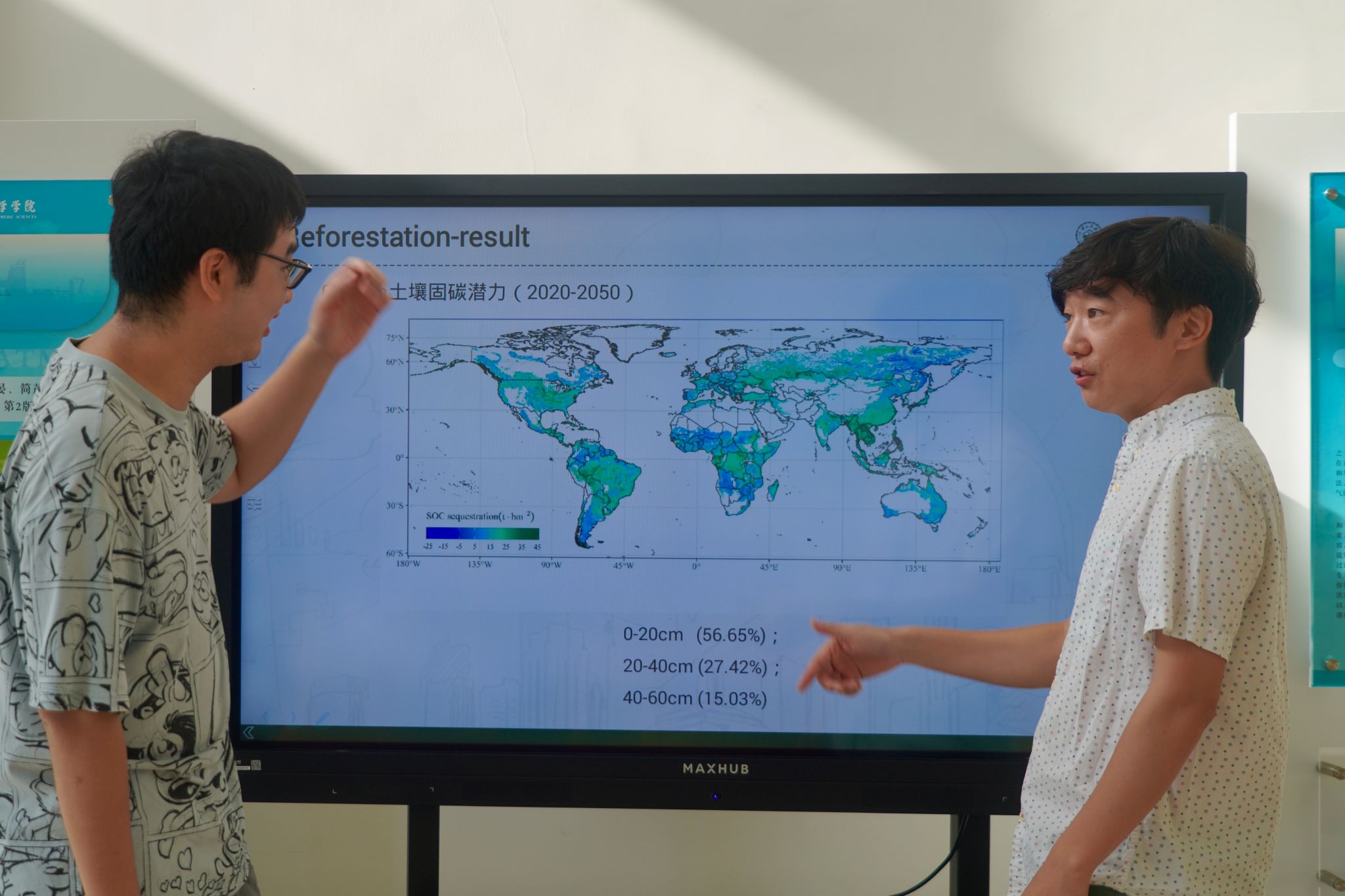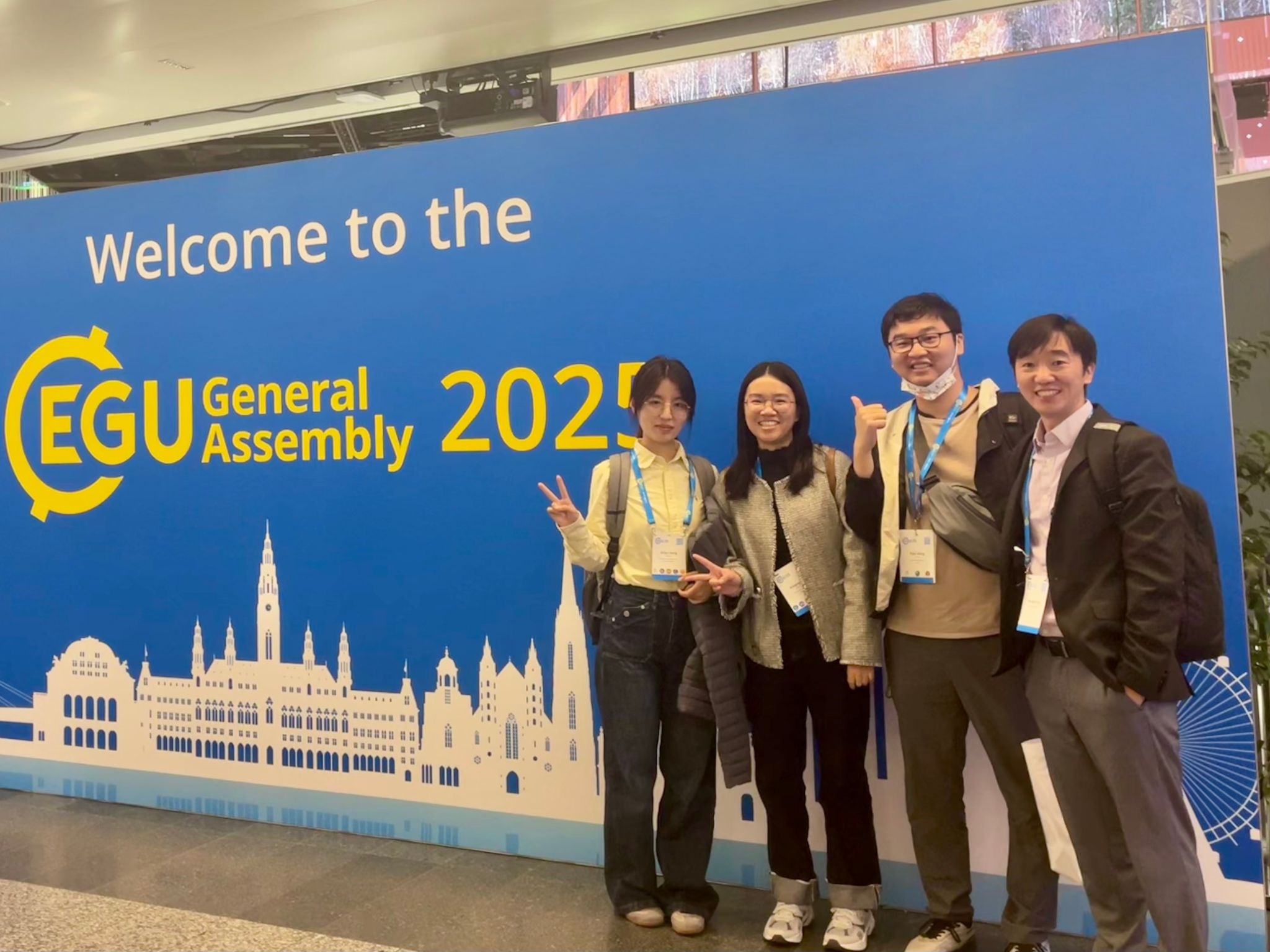A new study led by Professor Zhangcai Qin from the School of Atmospheric Sciences at Sun Yat-sen University (SYSU) has offered a more realistic assessment of the potential of forestation in combating climate change. Published in the prestigious journal Science, the research is the first to quantify global soil carbon sequestration capacity during forest restoration.
The study also pioneers a new framework that integrates three critical factors—ecology, climate, and policy—to reassess the true potential of forestation, providing essential guidance for future global efforts.

Unresolved Questions
As the world seeks to address climate change, reducing emissions and enhancing ecosystems' carbon-sinks are top priorities. Forests play a vital role in climate regulation by absorbing carbon dioxide (CO2), and forestation is widely considered a cost-effective solution. However, a key question has remained: What is the true potential of future forestation efforts, and how much CO2 can they actually sequester?
"Estimates of future CO2 sequestration from forestation vary widely, from under 3 billion to over 30 billion tons per year," noted Professor Qin. "This uncertainty stems from two main challenges: the difficulty in quantifying changes in soil carbon and the tenfold difference in global estimates of land suitable for forestation. Furthermore, a critical, long-ignored factor is the varying level of commitment among countries to implement forestation efforts."
A Comprehensive Framework
Professor Qin's team spent years compiling global soil data to develop a machine learning model for quantifying soil carbon change after forestation. By leveraging international collaborations and integrating this data with biomass sequestration estimates, they created a comprehensive tool to assess both biomass and soil carbon dynamics.
The team also incorporated cutting-edge insights into the environmental and socioeconomic constraints of forestation, including biodiversity conservation, water availability, surface warming risks, and national policy commitments. This led them to develop a framework that balances the sustainable "supply" of land with the policy-driven "demand" from nations.

Yijie Wang (left), the paper's first author, and corresponding author Professor Zhangcai Qin (right) discuss model optimization.
The Realistic Potential
The study finds that while the world has the theoretical capacity to sequester up to 500 million tons of CO2 annually through forestation, this potential drops to just 150 million tons per year when considering sustainable land-use constraints and national policy commitments. This finding underscores that forestation's actual climate mitigation potential is far lower than previously anticipated.
"There is a stark mismatch between countries' forestation pledges and their actual land potential," Professor Qin said. "Nations with abundant suitable land have made relatively modest commitments, while those with ambitious goals, particularly low-income countries, often lack the land and resources to deliver on their promises."
To address this imbalance, Professor Qin proposes an Olympic-inspired vision for global forestation: "Faster, Higher, Stronger—Together." This initiative aims to provide scientific support for global climate cooperation and address the uneven distribution of forest resources and responsibilities between developed and developing nations.

Estimated mitigation potential from forestation varies with land availability assumptions. (A) Global and regional ecosystem carbon sequestration. (B) The currently achievable mitigation potential varies among countries and income groups.
Editors at Science commended the study for its comprehensive analysis, calling it a "more realistic" assessment of forestation’s climate effects. Academician Pep Canadell, leader of the Global Carbon Project, also published a detailed commentary on the paper.
Looking ahead, the team will continue to build on international partnerships to conduct interdisciplinary research on developing feasible, nature-based climate solutions.

Professor Zhangcai Qin (far right) and his student researchers, including the paper's first author Yijie Wang (second from right), at a conference in Austria.
Link to the paper: https://www.science.org/doi/10.1126/science.adj6841



